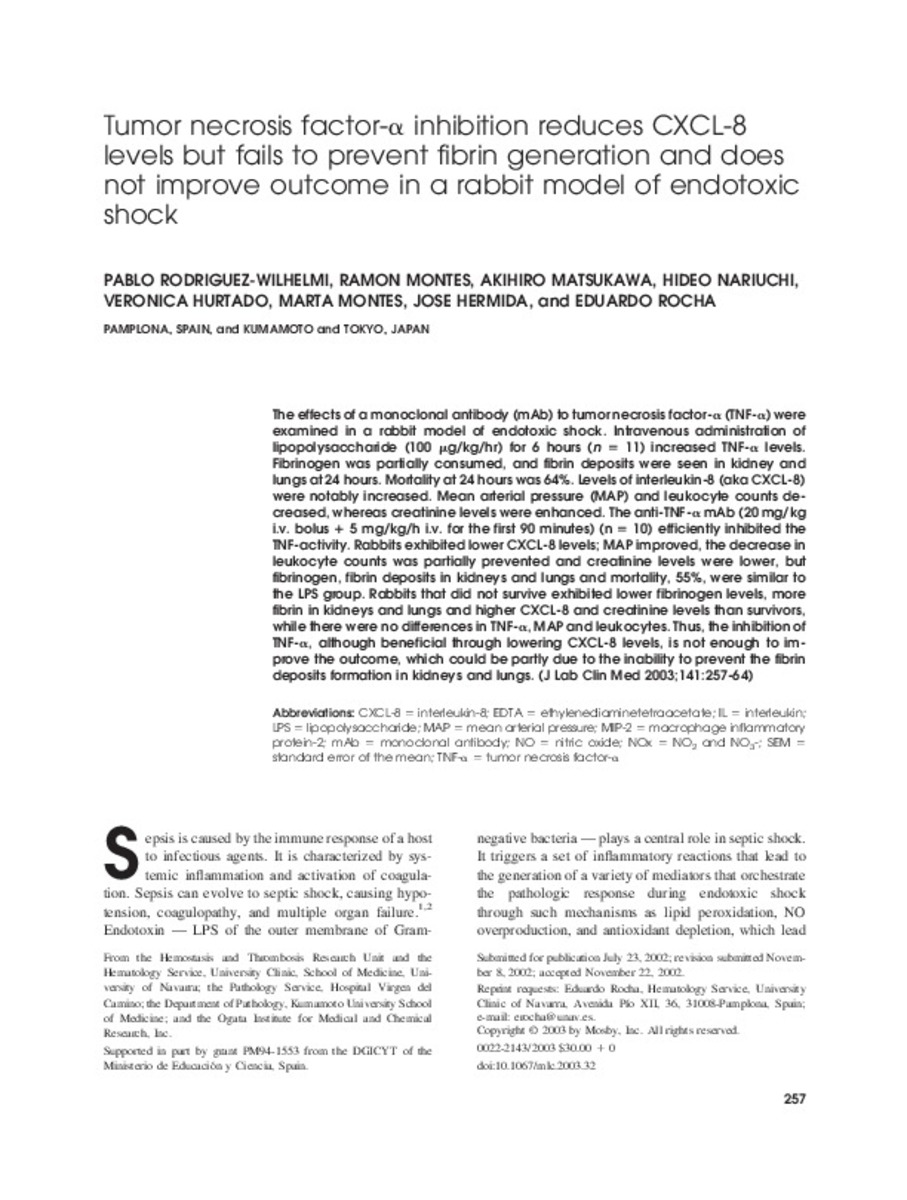Tumor necrosis factor-alpha inhibition reduces CXCL-8 levels but fails to prevent fibrin generation and does not improve outcome in a rabbit model of endotoxic shock
Keywords:
Antibodies, Monoclonal/pharmacology
Fibrin/metabolism
Interleukin-8/metabolism
Shock, Septic/metabolism
Tumor Necrosis Factor-alpha/antagonists & inhibitors
Citation:
Rodriguez-Wilhelmi P, Montes R, Matsukawa A, Nariuchi H, Hurtado V, Montes M, et al. Tumor necrosis factor-alpha inhibition reduces CXCL-8 levels but fails to prevent fibrin generation and does not improve outcome in a rabbit model of endotoxic shock. J Lab Clin Med 2003 Apr;141(4):257-264.
Statistics and impact
0 citas en

0 citas en

Items in Dadun are protected by copyright, with all rights reserved, unless otherwise indicated.







